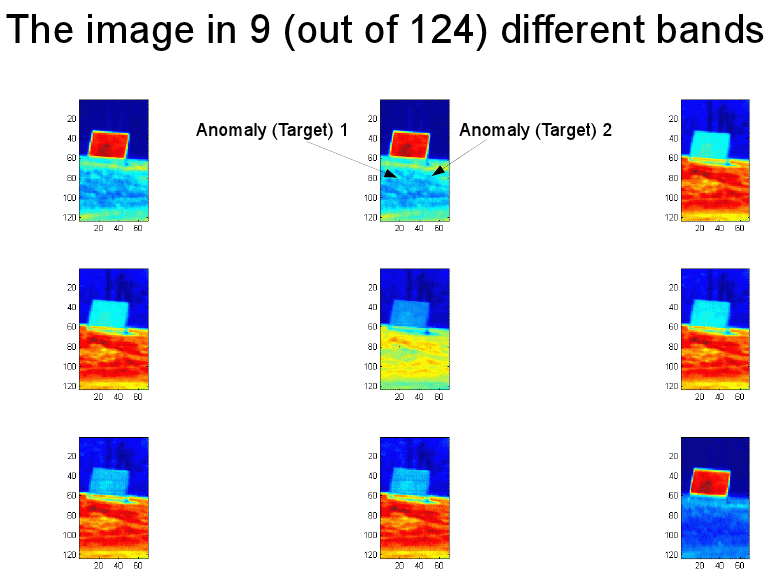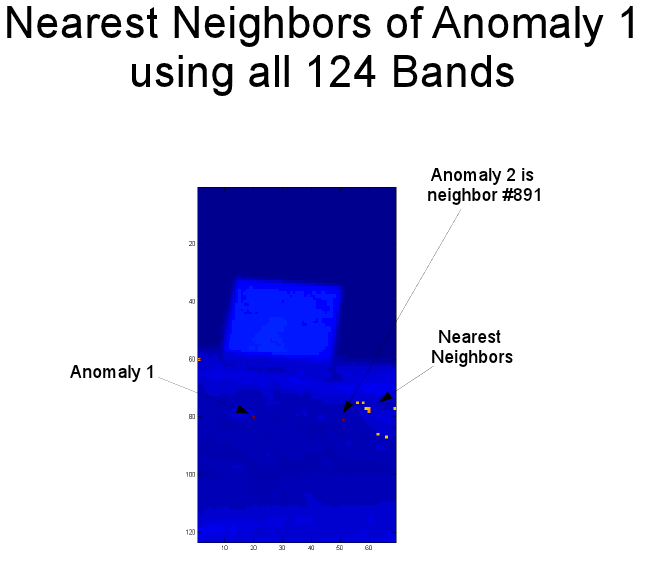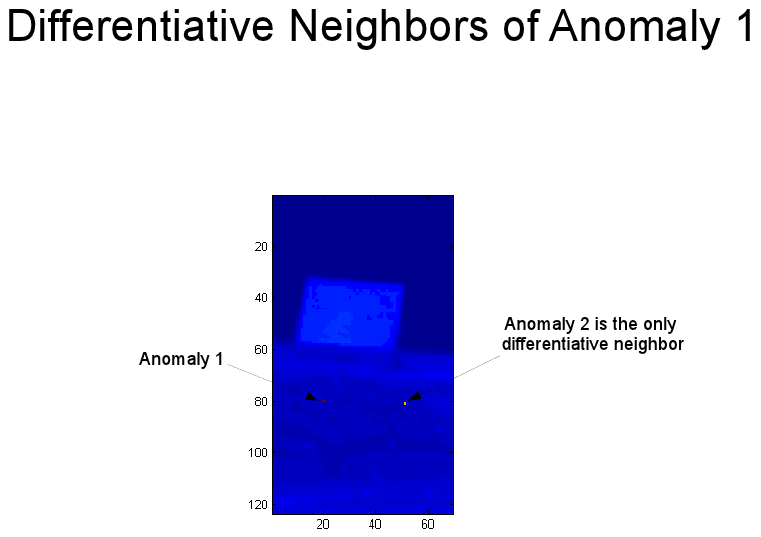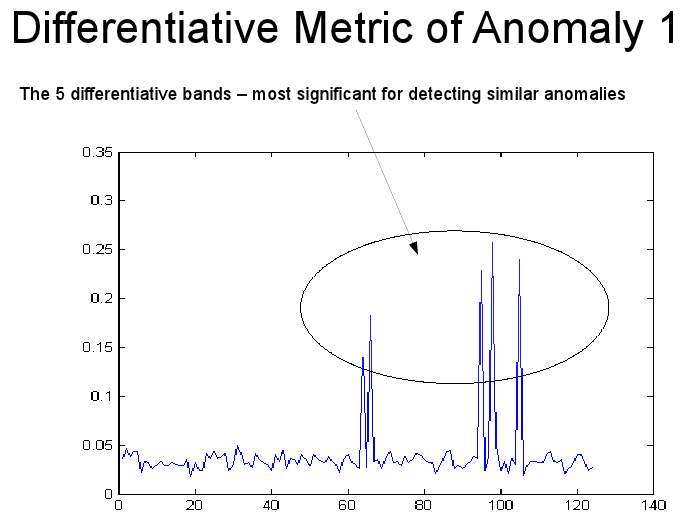Use case description
An intelligence organization is using hyperspectral imaging for surveillance purposes.
Hyperspectral imaging collects and processes information from across the electromagnetic spectrum. Much as the human eye sees visible light
in three bands (red, green, and blue), spectral imaging divides the spectrum into many more bands.
Hyperspectral sensors look at objects using a vast portion of the electromagnetic spectrum. Certain objects leave unique fingerprints across the electromagnetic spectrum.
These fingerprints are known as spectral signatures and enable identification of the materials that make up a scanned object.
Every period of time, the intelligence agency takes hyperspectral images of certain areas. Some of them include very small targets that are hidden in the field.
Our challange was to detect the targets in the field, and to use the characterization (fingerprint) of the detected targets to identify
other hidden targets.
Our analysis
We used our data mining, anomaly detection and differential diagnosis technologies
to provide accurate classification of hyperspectral objects and to identify the hidden targets in the field.
The hyperspectral images were used as the input to our differential diagnosis technology.
Each image contains thousands of high-dimensional hyperspectral pixels.
We analyzed the hyperspectral pixels to detect anomalous pixels. These pixels were used to diffuse in order to find other anomalous
pixels. At the end of this process, the detection of the anomalous objects is accomplished and the hidden objects are exposed.
The following example shows an example of such hyperspectral image, were two objects ae hidden in the field.

Given one object as an anomaly, we try to propagate and find the other anomaly (object) in the field.
The following image shows how conventional methods will propagate. We can see that by starting with Anomaly 1, the conventional methods fails
to detect Anomaly 2.

The following image shows how our differential diagnosis technology successfully propagated from Anomaly 1 to Anomaly 2.

In addition to the detection, our technology provides the differential metric of the detected anomaly.

The differential metric is the unique fingerprint of the target that is used to detect other similar targets.
Conclusions and our solution
We developed a system that can detect hidden targets in hyperspectral images. The system starts with a single anomaly and then it propagates to other hidden anomalies (targets).
Our technology was found as far more accurate than conventional methods.
The system is based on our advanced technologies for data mining, anomaly detection and differential diagnosis in high-dimensional data.